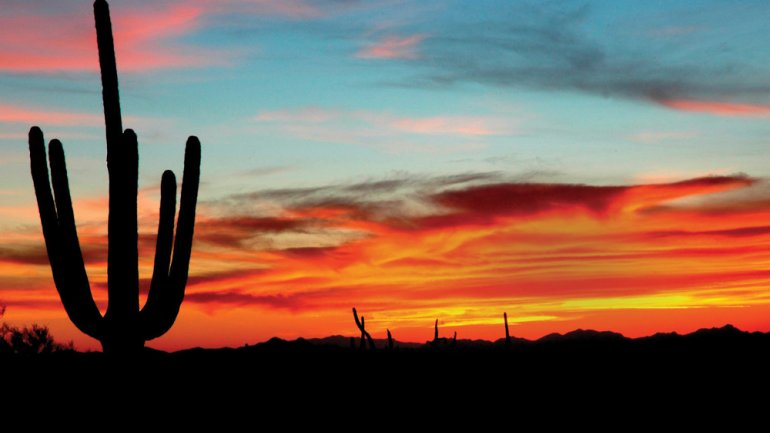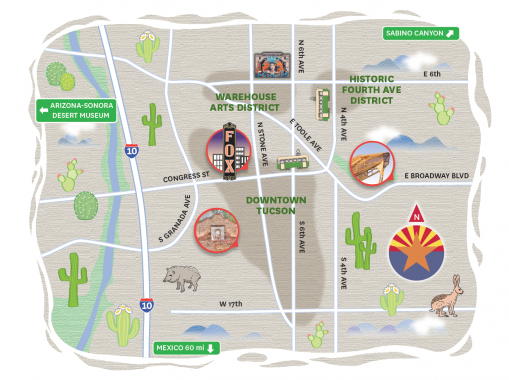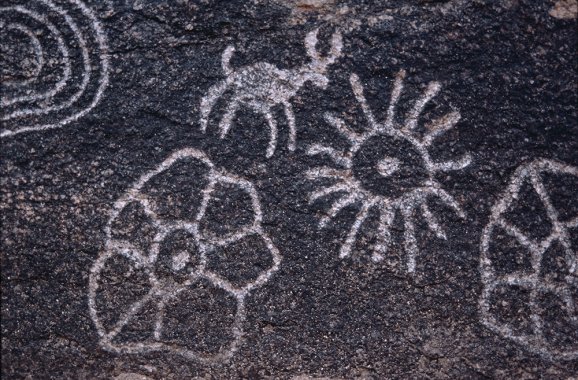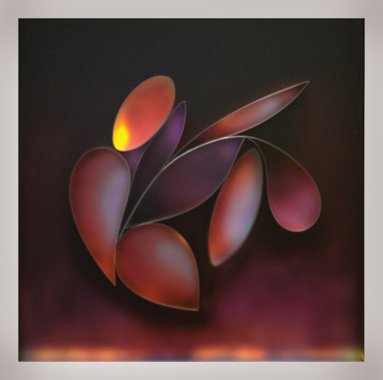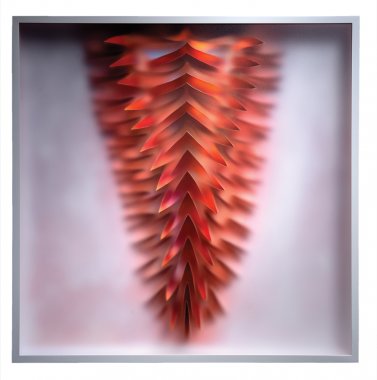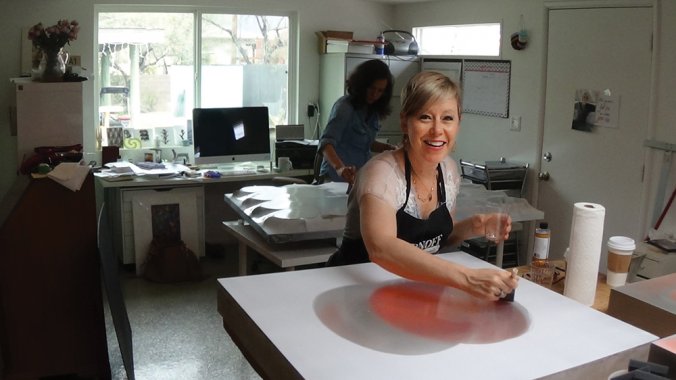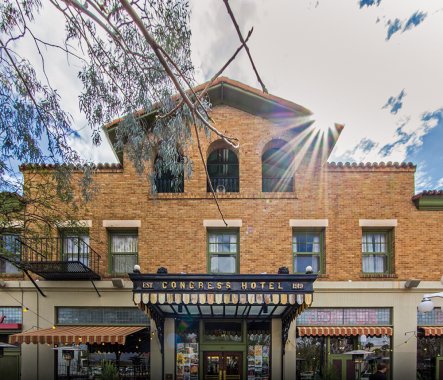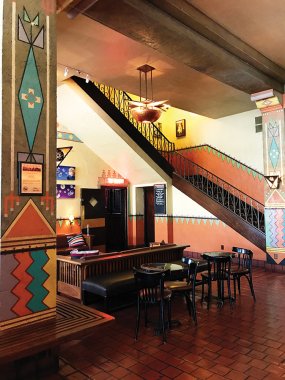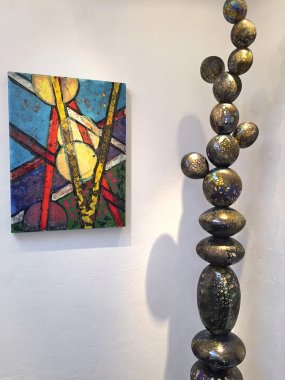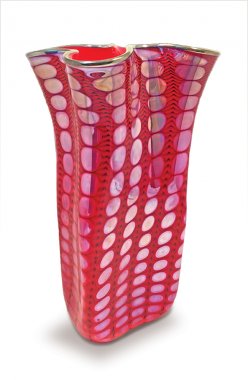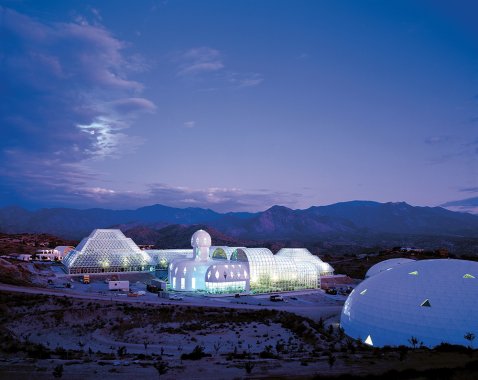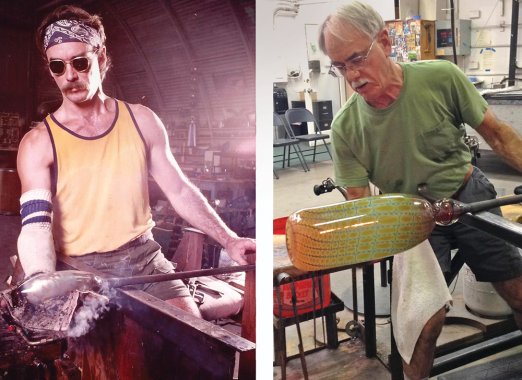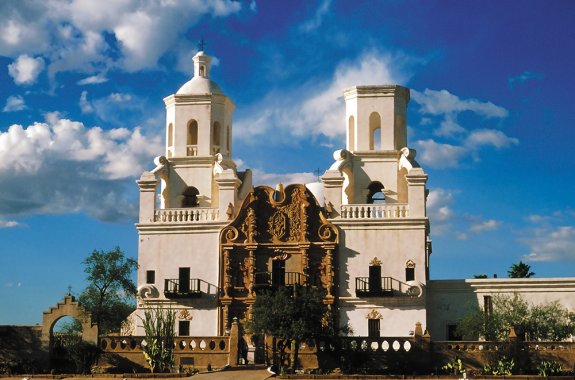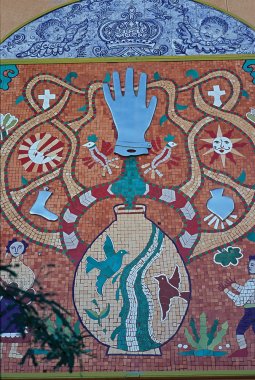Sunshine Daydream: Tucson, Arizona
Sunshine Daydream: Tucson, Arizona
With the backdrop of the Santa Catalina Mountains and awe-inspiring desertscapes, Tucson, Arizona, inspires both the creatively inclined and outdoorsy types. Coupled with affordable rents and a laid-back lifestyle, it adds up to a robust contemporary arts scene of passionate makers, with a supportive community to match.
Glassblower Tom Philabaum was drawn to the high-desert city more than 40 years ago. The Ohio native, who studied with glass pioneer Harvey Littleton, moved to Tucson after visiting his cousin and falling in love with the lifestyle. “It was a spiritual place, all kinds of interesting people, cheap rent,” he recalls, summarizing the allure that still attracts people to the region, whose metro population hovers around 1 million. (About 536,000 people live in the city itself.) He has become a pillar of the Tucson arts community, and in February, the Tucson Museum of Art awarded him its Ambassador Circle Lifetime Achievement Award.
He opened the Philabaum Glass Gallery & Studio in 1982 and also taught at the University of Arizona and later at the Sonoran Glass School, which he co-founded in 2000. The gallery and studio remain a hub for his sculptural works, as well as a showcase for the work of more than 30 glass artists from around the country. Among his series are Precarious Rocks, stacked baubles inspired by “camping and waking up and seeing all these beautiful rock formations,” and Wall Flowers, with an iridescent, kaleidoscopic quality reminiscent of Arizona sky.
But the craft is no easy labor, and in December, at 71, he decided to stop blowing glass, focusing instead on his abstract fused-glass collage paintings.
Everett Grondin, a native Tucsonian, is passing down his craft to the next generation. A steel fabricator, he also works under the name DogLix Designs; he began learning metalwork at an early age from his father. He started out mostly with commissions, making custom gates for residents in the affluent Foothills neighborhood and for local businesses, but since becoming a part of the Metal Arts Village, a studio complex that hosts open houses every full moon, he has been creating abstract sculptures. Working alongside his son, Everett G. Grondin, he salvages metal from scrapyards — from horseshoes to headlamps — making likenesses of cacti and desert critters with his finds, along with his whimsical Venus de Metal, which stands in the village sculpture garden.
“It’s what you find,” explains Grondin about his creative process. “The way that piece of steel [for Venus] was being chopped up, partial arms and no head, it kind of looked like it was dancing. Other than the fact that I found it and had to drag it out and put it in my truck, it was really just something I saw.”
In her home studio in the Richland Heights neighborhood, Carrie Seid makes mixed-media sculptures that challenge notions of light and perception. The Chicago native’s background is in textile design, but during grad school at Cranbook Academy of Art, she realized she was drawn to luminosity more than to pattern. Moving to Tucson in 2000, she found inspiration in the powerful desert sun and began creating her signature light boxes.
Seid’s works are illuminated by reflective light. She starts with a metal structure — for example, strips of aluminum flashing that she cuts, paints, and assembles into a pattern as though they were textile pieces — and covers it with oiled silk or plexiglass. As light shines through, the piece changes colors, like a naturally occurring mood ring.
Seid is interested in the emotional use of color – “If you have a feeling, what could that look like?” She names her works accordingly: Blurst, a portmanteau for “burst” and “blue,” is made up of azure rays. Georgia #2 takes the skeletal form of a bright orange flower, a nod to O’Keeffe, who also found her muse in the desert.
Seid, who works as a creative coach on the side, is active in the Tucson arts community; her work can be seen in public art installations around the city. “The art scene here in Tucson is rich, diverse, and expanding quickly,” she says, noting the revitalized downtown, which has blossomed with art galleries, live music, and brightly colored murals.
Tradition also plays an important role, she says: “The history of Hispanic and Native American art in this area continues to inspire all of us in the arts, and the natural beauty of the bizarre desert formations is a daily reminder of our connection to the land. While the art community is intimate in scale, it’s incredibly supportive. Tucson is a place where all boats would rise together, if we had boats.”
If You Go
Downtown Tucson
Downtown Tucson has a small but robust arts district of galleries and museums. Housed in the historic Oddfellows Hall, Etherton Gallery showcases historic and contemporary photography, along with fine art, mixed-media work, and sculpture. A few blocks south, the Museum of Contemporary Art (MOCA Tucson) boasts a mix of works from local and international artists, while the Tucson Museum of Art is known for its permanent collections and traveling exhibitions of Latin American work and art of the American West. Philabaum Glass Gallery & Studio is on the southern edge of downtown.
Historic Fourth Avenue District
North of downtown, the Historic Fourth Avenue District is bustling with boutiques, bars, and cafés. Don’t miss Pop-Cycle, a funky shop with local craft, much of it Tucson-themed. Stop in at Del Sol International Shops for wares from the US Southwest and Latin America. Santa Theresa Tile Works has been around since 1986, offering commercial and residential installations and workshops open to the public. In the spring and winter, the Fourth Avenue Street Fair fills the area with local and international artisans, live music, and food.
Warehouse District
Just west of the Fourth Avenue District, forming a triangle between Sixth Avenue, North Sixth Street, and East Toole Avenue, Tucson’s historic warehouses have been renovated and repurposed as art studios and gallery spaces. Solar Culture is home to studios, a gallery featuring work by both established and up-and-coming Tucsonians, and a nonprofit music venue in a 3,000-square-foot art deco space. Davis Dominguez Gallery is a powerhouse of contemporary art in a 5,400-square-foot warehouse, with work by local and nationally known artists. In the Steinfeld Warehouse Community Arts Center, Conrad Wilde Gallery showcases the work of emerging artists and offers affordable craft classes.
